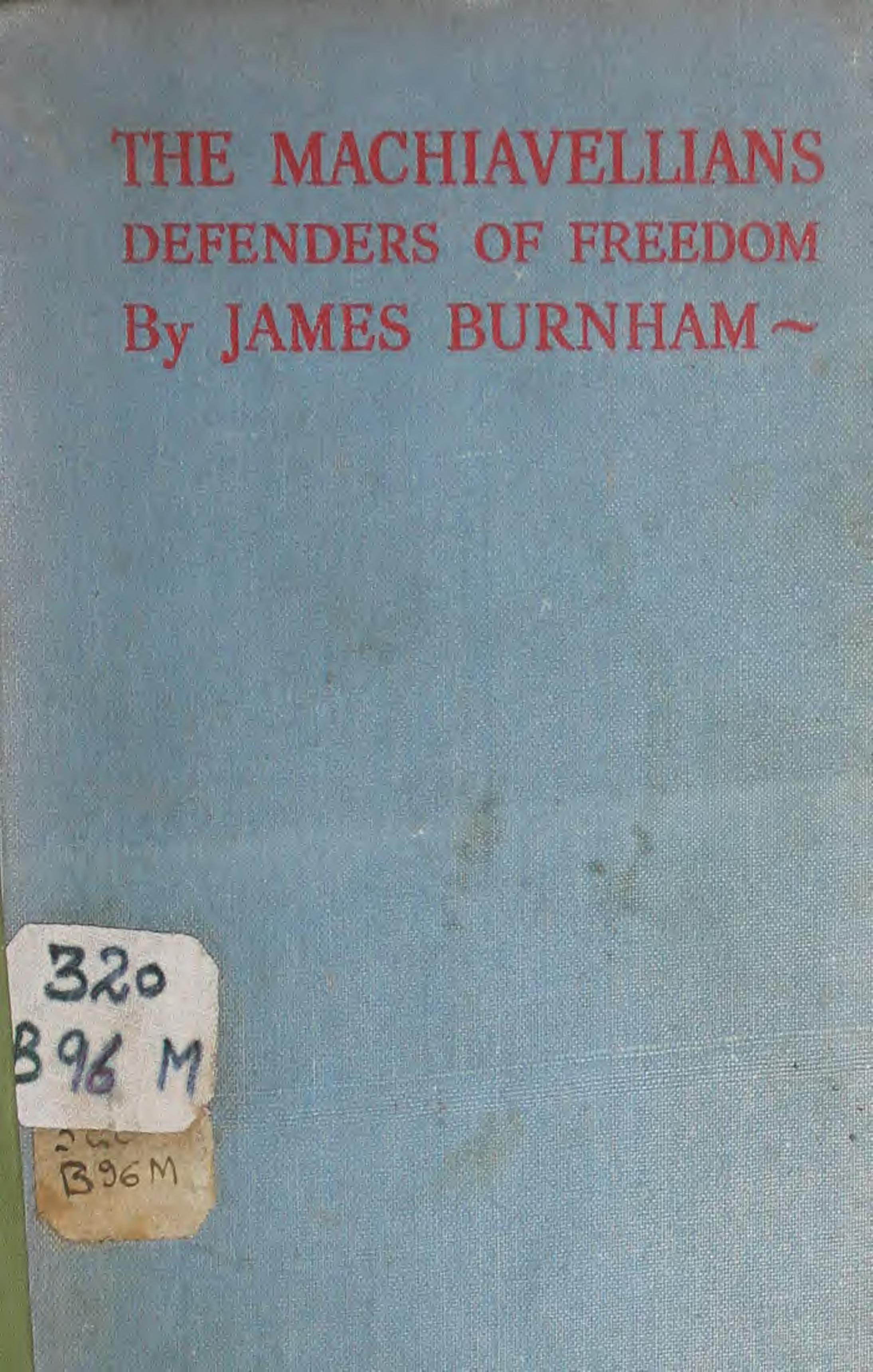The Machiavellians: Defenders of Freedom by James Burnham

Author:James Burnham
Language: eng
Format: mobi, epub, pdf
Publisher: Endeavour Media
Published: 2019-01-23T22:00:00+00:00
3. The Autocracy of Leadership
Cultural and psychological causes, thus, combine with the technical conditions of organization to bring about a division between the leaders, on the one hand, and the mass of the organization’s membership on the other. The leadership is consolidated as a group, relatively independent of the mass. The leaders are indispensable to the organization’s life and activities. In practice, in spite of the forms and doctrines of democracy, the leaders are in a position to control and dominate the mass. Let us study further how the autocracy of the leadership expresses and maintains itself.
The leaders—mere “representatives,” according to democratic theory—have effective control of the organization’s finances. The funds are for the most part supplied by the mass. In theory and to some extent in fact, the mass can impose certain restrictions on what is done with the funds. But in practice the use and distribution of funds is under the direct control of the leaders.
This control is often very crudely expressed by the tendency of leaders to assign relatively large amounts of money to themselves, a tendency of particular interest as it operates in labor organization.[*] In the early days of trade unions or labor political parties, the leaders are usually non-professional, or serving perhaps part-time with little or no pay. The indispensable need for full-time and professional leaders is soon apparent. There is usually a stage when the conception arises that a leader should be paid at the rate that would be received from an ordinary employer by a worker-member of the organization. This stage soon passes. As the organization grows and becomes established and powerful, the pay which the leaders receive from the organization goes rapidly up until it is far beyond the income level of the ordinary members. A trade-union official in this country at the present time frequently gets as much as a $40,000 salary, plus that or more in “expenses,” as well as the “use” of union property such as houses, cars, and even airplanes. This financial privilege marks the dominance of the leaders over the organization, and at the same time, through the greater resources, cultural as well as material, which the high income places at the leaders’ disposal, reinforces their dominance. In the beginning, at conventions and meetings, the members protest this development, which they rightly regard as autocratic and directed against themselves. But not successfully or for long. The leaders are beyond their control, and the delegates, some of them grumbling, vote the increases.
The process, as well as several other of the tendencies discussed in the last section, were particularly well illustrated in the proceedings of the 1942 convention of the United Automobile Workers. This great union was then young, and showed organizational tendencies in their growth, not as hidden and crystallized in established groups. In its first years, before a leadership stabilized (indeed, it had not yet fully stabilized in 1942), the U. A. W. went through a period of rapid administrative flux. It prided itself publicly on
Download
The Machiavellians: Defenders of Freedom by James Burnham.epub
The Machiavellians: Defenders of Freedom by James Burnham.pdf
This site does not store any files on its server. We only index and link to content provided by other sites. Please contact the content providers to delete copyright contents if any and email us, we'll remove relevant links or contents immediately.
The Secret History by Donna Tartt(18839)
The Social Justice Warrior Handbook by Lisa De Pasquale(12141)
Thirteen Reasons Why by Jay Asher(8790)
This Is How You Lose Her by Junot Diaz(6778)
Weapons of Math Destruction by Cathy O'Neil(6139)
Zero to One by Peter Thiel(5684)
Beartown by Fredrik Backman(5594)
The Myth of the Strong Leader by Archie Brown(5420)
The Fire Next Time by James Baldwin(5246)
How Democracies Die by Steven Levitsky & Daniel Ziblatt(5127)
Promise Me, Dad by Joe Biden(5087)
Stone's Rules by Roger Stone(5026)
100 Deadly Skills by Clint Emerson(4840)
A Higher Loyalty: Truth, Lies, and Leadership by James Comey(4840)
Rise and Kill First by Ronen Bergman(4701)
Secrecy World by Jake Bernstein(4640)
The David Icke Guide to the Global Conspiracy (and how to end it) by David Icke(4624)
The Farm by Tom Rob Smith(4434)
The Doomsday Machine by Daniel Ellsberg(4415)
